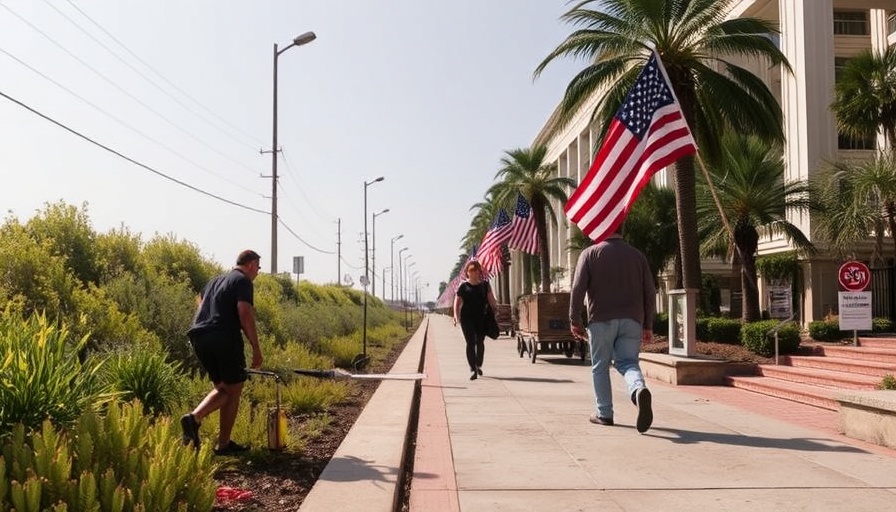
Bracing for a Record-Breaking Summer: What Homebuyers Should Know
This summer could shape up to be one of the hottest on record for the U.S., presenting unique challenges and opportunities for homebuyers and property investors. As extreme heat blankets states from Nevada to Florida, awareness of local weather patterns and their potential impact on property values and comfort is crucial.
The Impact of Extreme Weather on Real Estate Choices
As evidenced by the recent reports from the National Oceanic and Atmospheric Administration (NOAA), only Alaska might escape the alarming heatwave trends this summer. For homebuyers in particularly hot regions, such as Texas and Florida, an understanding of rising temperatures can influence real estate decisions significantly. Properties with energy-efficient air conditioning, proper insulation, and sustainable landscaping can become increasingly valuable as more buyers seek refuge from the heat.
Anticipating Long-Term Trends in Property Values
Historical weather patterns and climate changes directly affect home values. With extreme heat and drought conditions pushing their way into unprecedented territories, property investors should weigh these factors seriously.
For instance, the current drought conditions affecting the mid-Atlantic states are likely to impact the desirability and market value of properties in the area, as long-term water management becomes a priority. As buyers become more climate-conscious, homes equipped with water-saving technologies and smart landscaping can lead to stronger investment returns.
Disaster Preparedness and Property Safety
Given the expected rise in heat-related weather events, understanding local disaster preparedness frameworks can add another layer to your home-buying strategy. Areas assessed to be on the frontlines of severe weather may see stricter regulations regarding emergency renovations, making it necessary for buyers to consider homes already compliant with such standards.
The Role of Local Governments in Environmental Protection
The state of government investment in local services is becoming increasingly relevant. As noted in recent discussions surrounding the budget cuts to federal agencies, many state authorities have become responsible for individual outreach on climate and heat safety. Knowledge of local governmental support for sustainable practices can be a deciding factor for buyers and investors.
Communities Tackling Extreme Weather Together
Many communities are organizing to address the imminent threats posed by climate change. Homebuyers who engage with community initiatives may find not only a supportive environment but also properties that align with their values. These neighborhoods often work on enhancing sustainable practices and creating more resilient infrastructures to withstand heatwaves.
Being part of a resilient community can also provide significant peace of mind, knowing that local residents are collectively investing in strategies to combat adverse weather impacts. Look for areas with active participation from residents in climate initiatives, which can signal a commitment to sustainability that extends beyond the individual home.
Final Thoughts: Planning for a Sustainable Future
As you embark on your real estate journey this summer, let climate awareness guide your choices. In an era where extreme weather is becoming the norm, understanding how to navigate this landscape—both in terms of home efficiency and community resilience—will empower you to make informed and strategic decisions.
Stay ahead of the curve by researching properties that not only promise comfort during intense heat but also align with your values around sustainability and community support.
As we gear up for what promises to be a challenging summer, consider taking the first step by engaging with local experts and accessing resources that can help you navigate the housing market amidst these changes. Your home shouldn’t just be a shelter; it should be a sanctuary tailored for the future.
 Add Row
Add Row  Add
Add 





Write A Comment